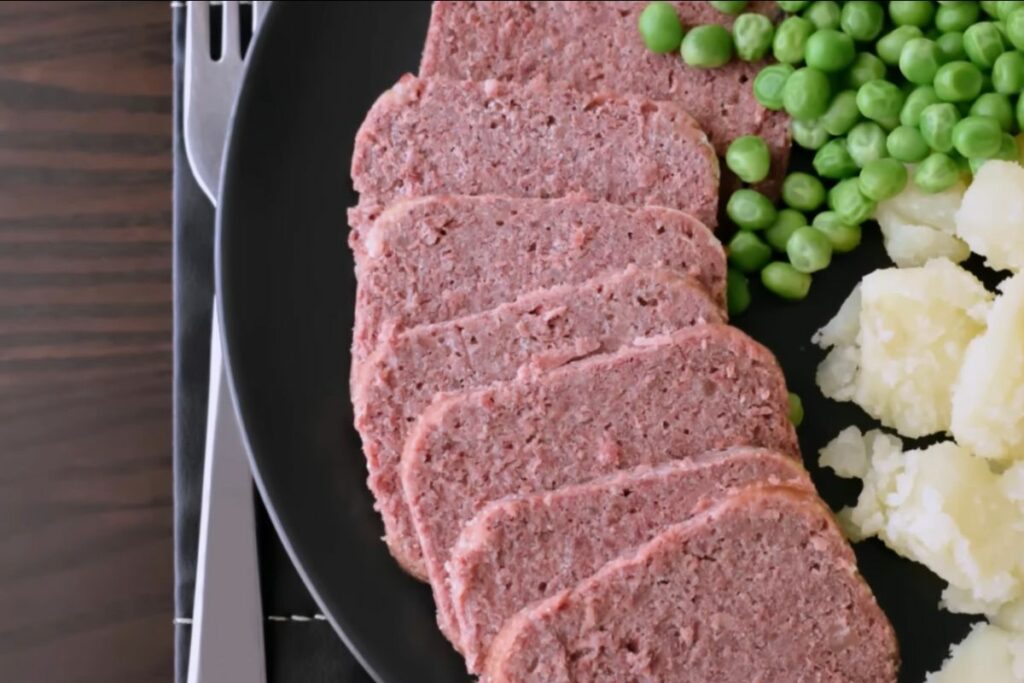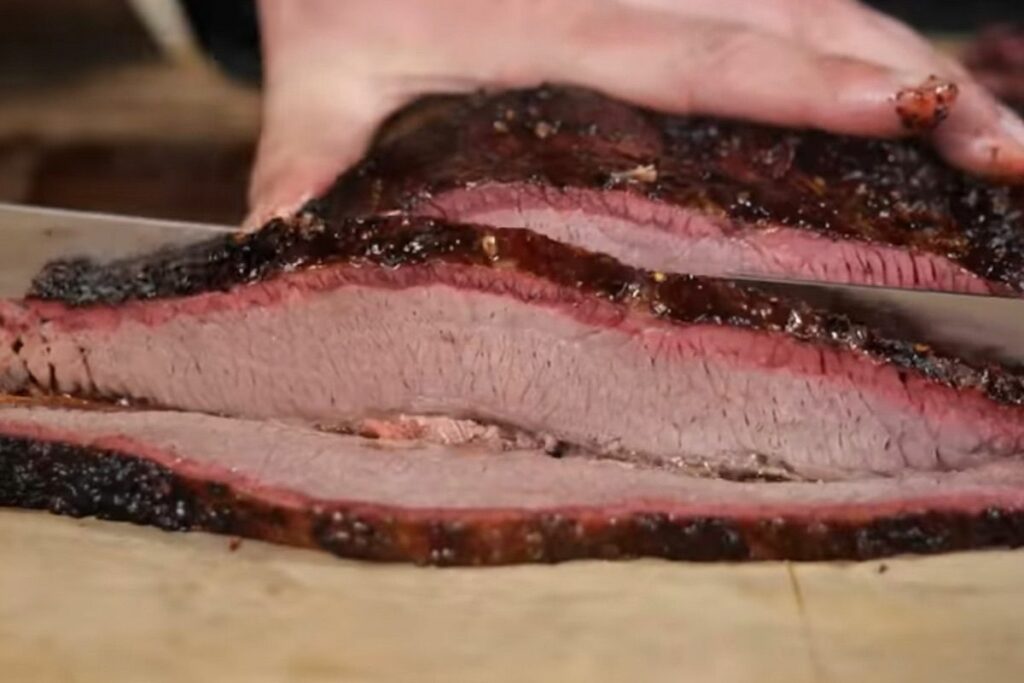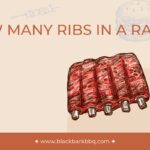Beef is one of those rare delicacies that seems to taste amazing in whatever form it is in. Whether as a steak, like ribs, as brisket, or thinly sliced for any deli sandwiches tasting pleasure.
And with so many ways of preparing beef for consumption, it is no surprise that there have been many variations on the preparation of beef for eating throughout history.

Whether that’s through salting and drying for preservation purposes, smoking over fires, slow cooking over hot coals, or grilling out over an open flame. impossible to cover them all here!
There’s just so much out there, it’s almost dizzying how many different preparation methods have popped up over time. It even gets a little difficult to tell them apart from each other. This is a shame because that denies us the beauty and variation that all these different methods bring with them.
Take, for example, the differences between corn beef, and beef brisket. Whilst most people are aware that these two kinds of beef are different, many would struggle to say why exactly they are different, such as their origins, how each is prepared, or even what sort of meal each type of meat is often used in.
Well, that’s what this guide is here to clear up: To help you tell the difference between these two types of beef, as well as other seasoned varieties of this delicious meat.
Brisket Beef
Brisket beef has less to do with the preparation of this kind of meat, and more to do with the cut of meat itself. Are used and prepared in a whole range of different meals from many cuisines, from American, to Italian, to Thai, to Korean, to British!
They come from muscle from the front part of the cow that would be considered the chest of a person. They are most regularly sold in points or strips at butchers or supermarkets around the world. Fattier briskets are usually cured, dried, and served as beef jerky.
Beef brisket is tough and needs long cooking times. It is typically smoked or roasted. Although often very succulent, beef briskets often have flavors added to them through basting, seasoning, and curing.
Origins
With cows being a part of many people’s diets for thousands of years, many people have used different cuts of this meat for food. The oldest reference to beef brisket was discovered during excavations in Israel back in the year 600 BC.
The ancient Hebrews were known for having great skills when it came to butchering animals, which made their use of beef briskets as a food source not surprising. Beef briskets are still a massive part of Jewish traditional meal recipes to this day, especially in pot roasts as a part of a holiday meal.
In the Middle East and Europe, however, beef briskets did not become popular until the Middle Ages. By then, beef briskets had already gained popularity across Britain. This is likely because this particular type of beef could be easily preserved by simply hanging it over fires.
These fires also added smokey flavor to the meat. As well as this, the meat could be stored in salt for long periods than any other cut of beef.
Corned Beef
Also known as ‘salted beef’ in some parts of the world, corned beef is a kind of beef that has been cured with salt. Throughout the time that corned beef has been prepared, it has been whilst using large grains of rock salt, otherwise known as ‘corns’ of salt.
Technically, the beef used usually comes from the brisket cut of beef, so it is itself a beef brisket! Briskets are often cut into two pieces after being salted. It is typically used as an ingredient in soups or stews. Salt is added to make the meat tender and flavorful.
The process of soaking removes the salt content and makes the meat softer, whilst adding the saltier flavor to the stew.
Corned beef brisket is a slice of favorite meat amongst many beef lovers because it tastes great, thanks to the extra curing of the salt. It is regularly sliced to make it easier to cook or to use in delis and sandwiches, where it is a common topping to add the salads and cheeses.
It is especially delicious when added to soups or stews, where the salt can enhance the flavor of both the beef and the broth.
Origins
Being a type of brisket, corned beef started its history as simply a variation on beef brisket. Salt had been used to cure and preserve beef for thousands of years, and this would remain unchanged until the 17th century, during the British Industrial Revolution.
Becoming an incredibly popular type of food for many people who worked within the cities of the rapidly expanding urban centers of the United Kingdom, whilst also being traded with many other major powers of the day, such as France and it’s colonies.
This would become quite a detriment to the conquered lands and colonies of the British Empire, who had to devote more of their land and resources to preparing this food, only for it to be shipped out to consumers across the world, and for them to never had the chance to eat it for themselves.
This was especially the case for a lot of Irish farmers in the 17th through to the 18th and 18th centuries being massive producers for this amazing new type of beef, only for many being too poor to even afford it.
As previously mentioned, by the 1800s, corned beef was the main form of beef preservation. It became a staple of the American diet, particularly because America needed beef to feed itself after its victory in the Mexican War.
By the 20th century, corned beef had become extremely popular throughout the United States. By 1938, there were over 1 million pounds of corned beef sold annually. However, by the 1970s, this number dropped significantly, although it remains one of the most popular types of beef today.
Differences

So, we’ve gone over some basics of both corned beef, and beef brisket. And as you can see, there is plenty that the two types of beef share in common.
They both share similar origins, being an answer to preserving meat and beef, as well as being popular choices for transporting over long distances. They can also look pretty similar to someone who is not informed otherwise of what they are looking at (although this isn’t always the case, more on that later).
But what sets corned beef apart from normal beef brisket? We’ll take a look at exactly what those differences are, and how they affect your selection preferences…
Where it comes from?
Corned beef comes from the brisket section of the cow, which is located between the foreleg and hind leg. There are a few different cuts of beef brisket, but the most commonly used is the top round. It’s essentially the same thing as a bottom round, except it isn’t connected to any bones whatsoever.
The cut has no bone running along with it, so it doesn’t have to be trimmed off either, leaving you with a much larger piece than if you had chosen the bottom round.
The difference between the top round and bottom round is that the top round is generally considered to be the fattier part of the brisket, whereas the bottom round tends to be leaner, and less fatty, making it a better choice for cooking methods like grilling, roasting, or barbecuing.
So, when it comes to the difference between corned beef and normal brisket, whilst they do come from very similar spots, a small difference can sometimes be found between them.
Preparation
Whilst initial preparation for both beef brisket and corned beef is very similar, it diverges quite a lot once the brisket has been cut from the animal.
Brisket
After removing the fat, the first step is to trim all the excess fat away. Then, the entire brisket will be placed into a large tub filled with water, and then submerged under the water. This process helps remove the saltiness of the meat and makes sure that the meat doesn’t dry out.
Once completely submerged, the meat needs to stay there for 3-4 days. If not submerged, the meat will start to dry out, and eventually spoil.
After this time, the water needs to be drained out and replaced with fresh water. The next step is to place the meat back on a rack and allow it to air dry for another day or 2. When the meat is completely dry, it should be ready to use.
Corned Beef
Once the butcher has removed the fat, the brisket is placed into a brine solution made up of table salt (2%), sugar (1%), brown sugar (1%), and vinegar (1%). After placing the meat into the brine, the meat must be left undisturbed for 10 hours. Again, after 10 hours, the meat should be allowed to air dry, before being presented and eaten.
In this way, curing corned beef is very similar to the process of pickling for vegetables.
Appearance
Whilst we did already state that these two types of meat looked very similar, there are a few things that may be able to help you tell these two products of cow apart.
Beef brisket tends to have a crispier outside than corned beef does, perhaps on account of the lack of pickling, as well as brisket preparation often including cooking it on a grill.
The inside of a piece of corned beef also tends to be a little pinker than beef brisket does, although this is by no means a universal rule, as a rare beef brisket can also be very pink once it has been cut open.
Texture
The texture is also wildly different, depending on how your beef of choice is presented. The brisket itself, as a largely cheaper cut of meat, can either be left whole, cut into smaller pieces, or even ground down and reformed for being tinned.
When prepared whole, the meat will typically come away from either side of the cut, allowing you to easily slice it up yourself. After slicing, you will then be able to use either end of the brisket to cook it however you wish, such as using the flat side for a steak, or the pointy side for a roast.
Corned beef, meanwhile, tends to be cut and sold in two forms that give it a distinct texture: Tinned, or often in slices.
When in its tinned form, corned beef can have a lovely soft texture with its meaty taste, though it isn’t uncommon to find badly-prepared tinned corned beef that has the texture of rubber, which is usually caused by the beef being overcooked whilst it is being prepared.
Corned beef is also often sold in a very thin, sliced form, that is soft to chew, whilst also being flavorful and juicy. This is a popular choice of meat for many deli sandwiches across the world, as it can be balanced with either a strong or soft cheese, or with a healthy but sweet helping of salad to go in the sandwich.
Uses
As we have already stated, corned beef is very popular as a deli sandwich filler across the world. It is also popular to be used in a stew or soup, as we have previously mentioned.
Brisket meanwhile is also very versatile meat, especially when fans of beef are not too keen on the salting and curing of corned beef. They are a popular filler in Mexican cuisine, such as in burritos, enchiladas, and quesadillas. Texas brisket is a popular way of preparing this type of beef in American foods and meals and is extremely popular amongst those who enjoy barbecues.
Pastrami, and How it Compares the Corned and Beef Brisket?
When it comes to meats that are similar to corned beef, the pastrami is another meat dish that is cut from beef brisket, very much like corned beef and traditional brisket. Both pastrami and corned beef are prepared meats made to last long periods without needing to be refrigerated, and all three are popular fillings in sandwiches.
Both also use salt when being prepared, unlike normal beef brisket, but corned beef uses rock salt, or salt ‘corns’ as they used to be known in the United Kingdom.
This is not the case for pastrami. Pastrami is also smoked, while corned beef is boiled, making it a slice of tender meat to the touch, and to taste, especially more so than pastrami. Pastrami is made using a process called dry-curing, where the meat is salted and dried before smoking.
Beef brisket is typically used in making pastrami, like corned beef and brisket, but other cuts from different livestock animals can be substituted, with turkey or lamb also being used when beef is not available. The spice mixture includes black pepper, garlic, and coriander seeds.
The meat is rubbed with the spice mixture and then smoked and steamed. Pastrami is made by cooking meat until the connective tissue breaks down, giving it its distinct texture that is very much unlike other types of beef products.
Conclusion
So, whilst there are plenty of similarities between corned beef, brisket, and other types of beef, there is also lots of difference in their preparation methods, and their unique tastes.
We hope you enjoyed reading our article today and found it helpful for your many kinds of beef needs to come!
- Porterhouse Vs. Ribeye - May 16, 2022
- How Long To Smoke A Brisket Per Pound – Explained - May 16, 2022
- What Is A Tomahawk Steak? - May 16, 2022








